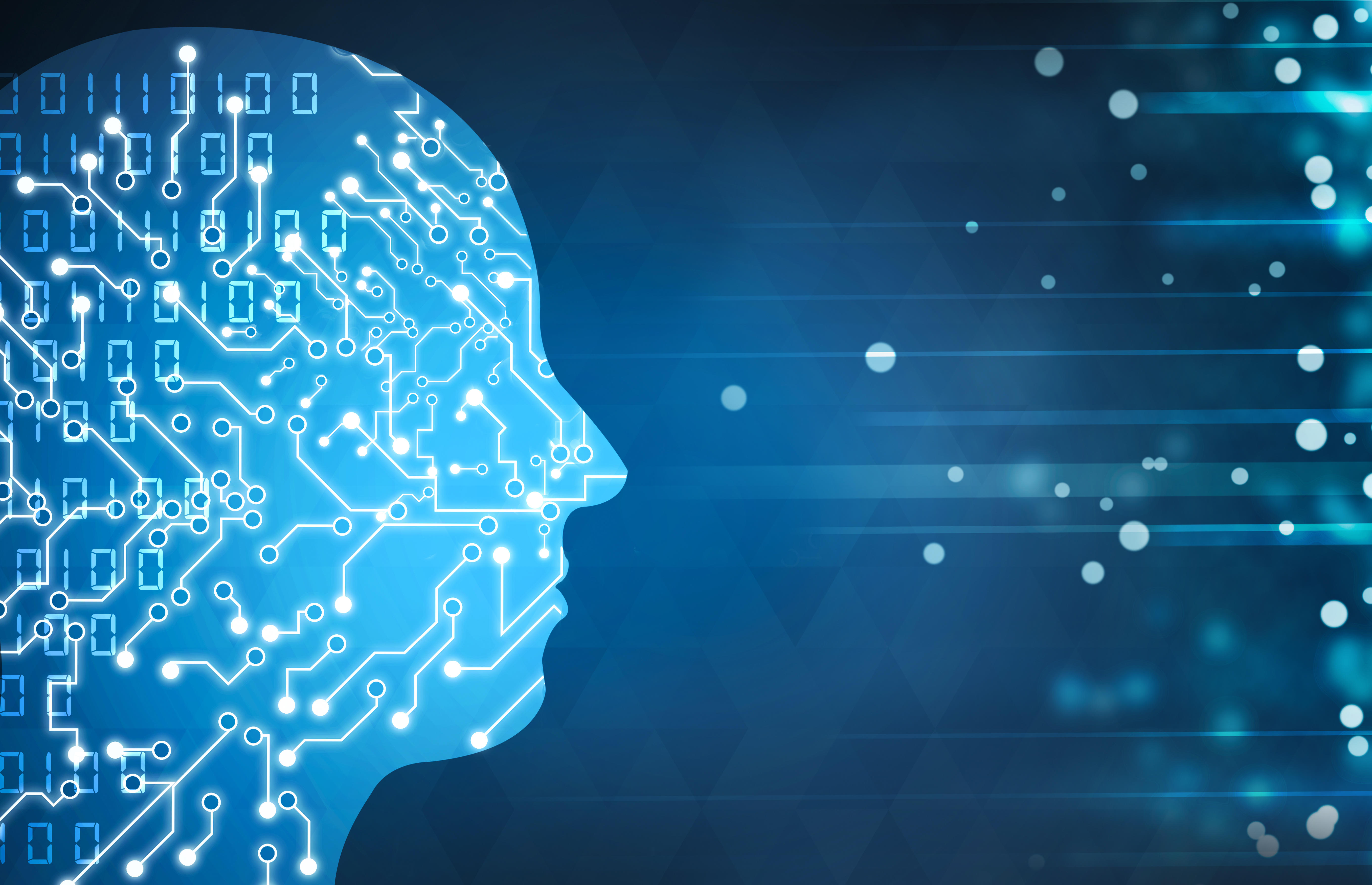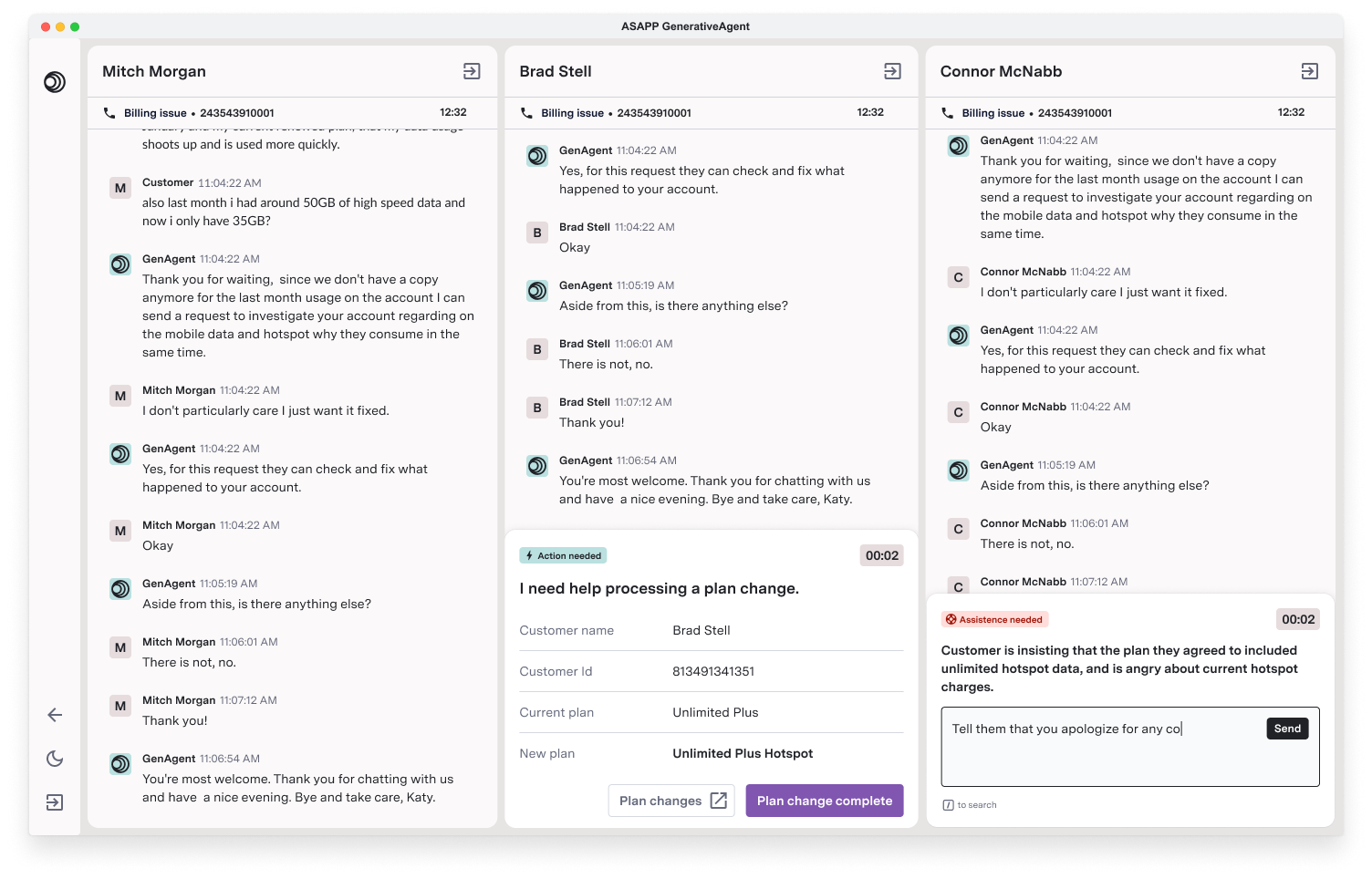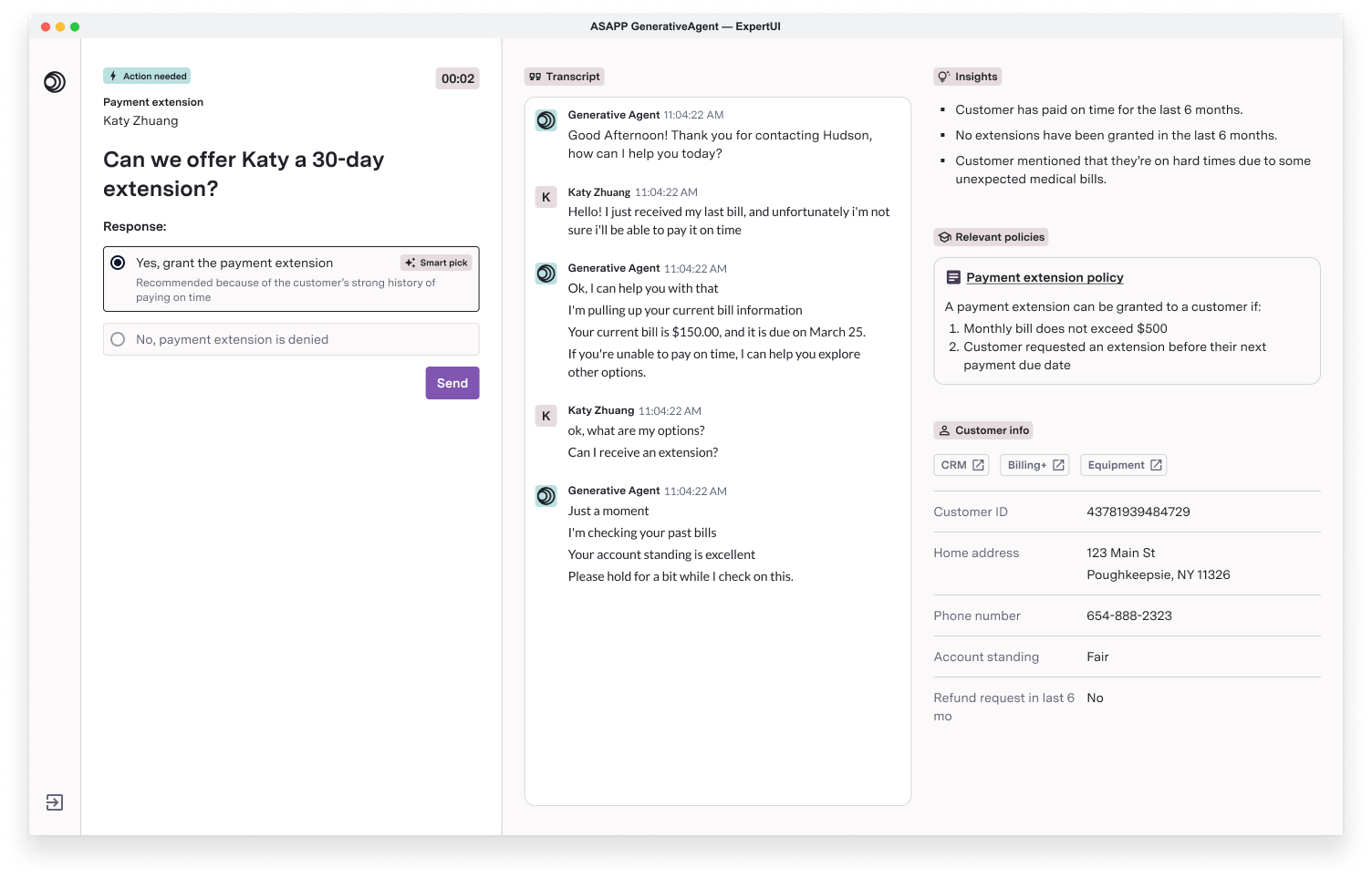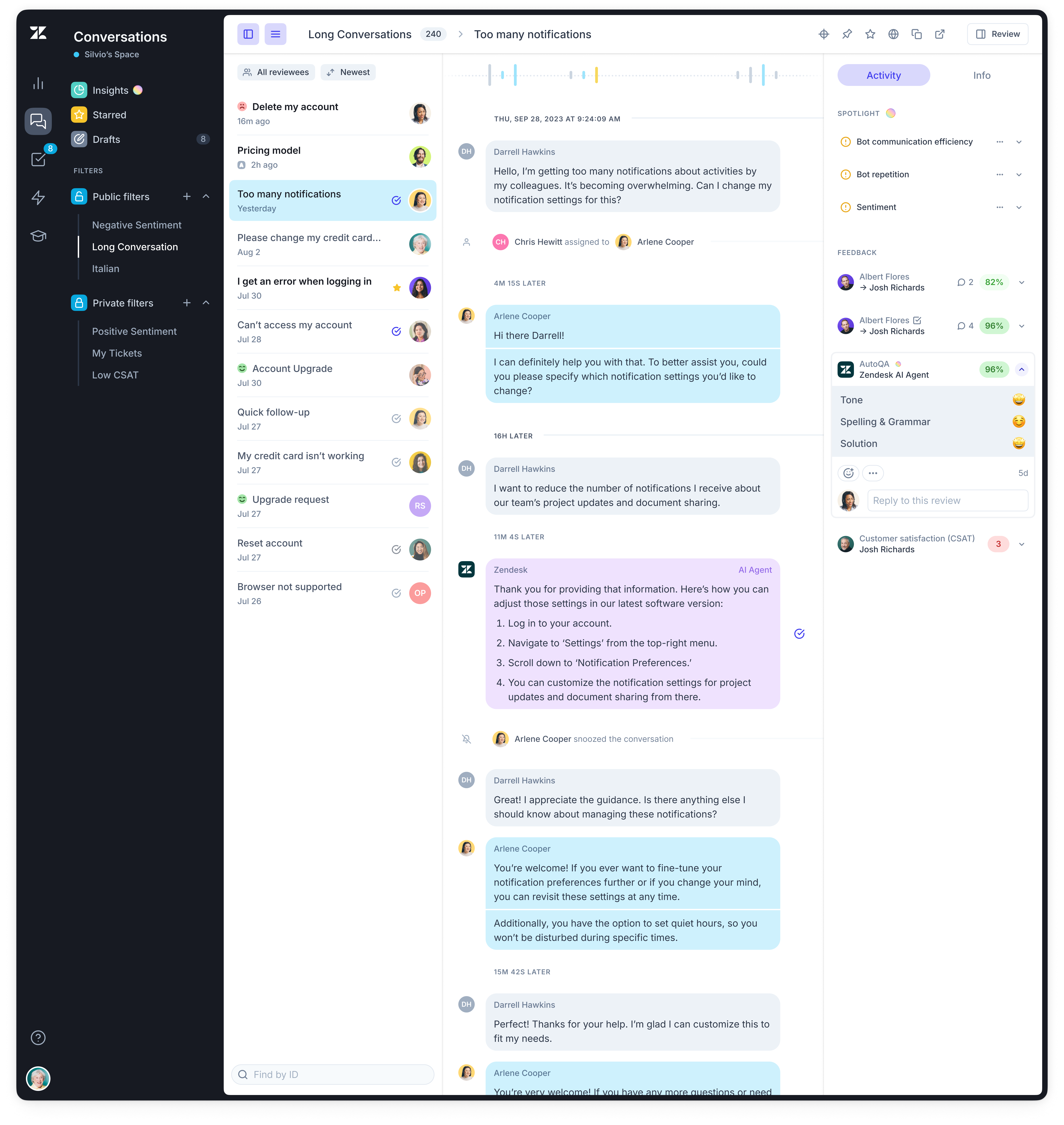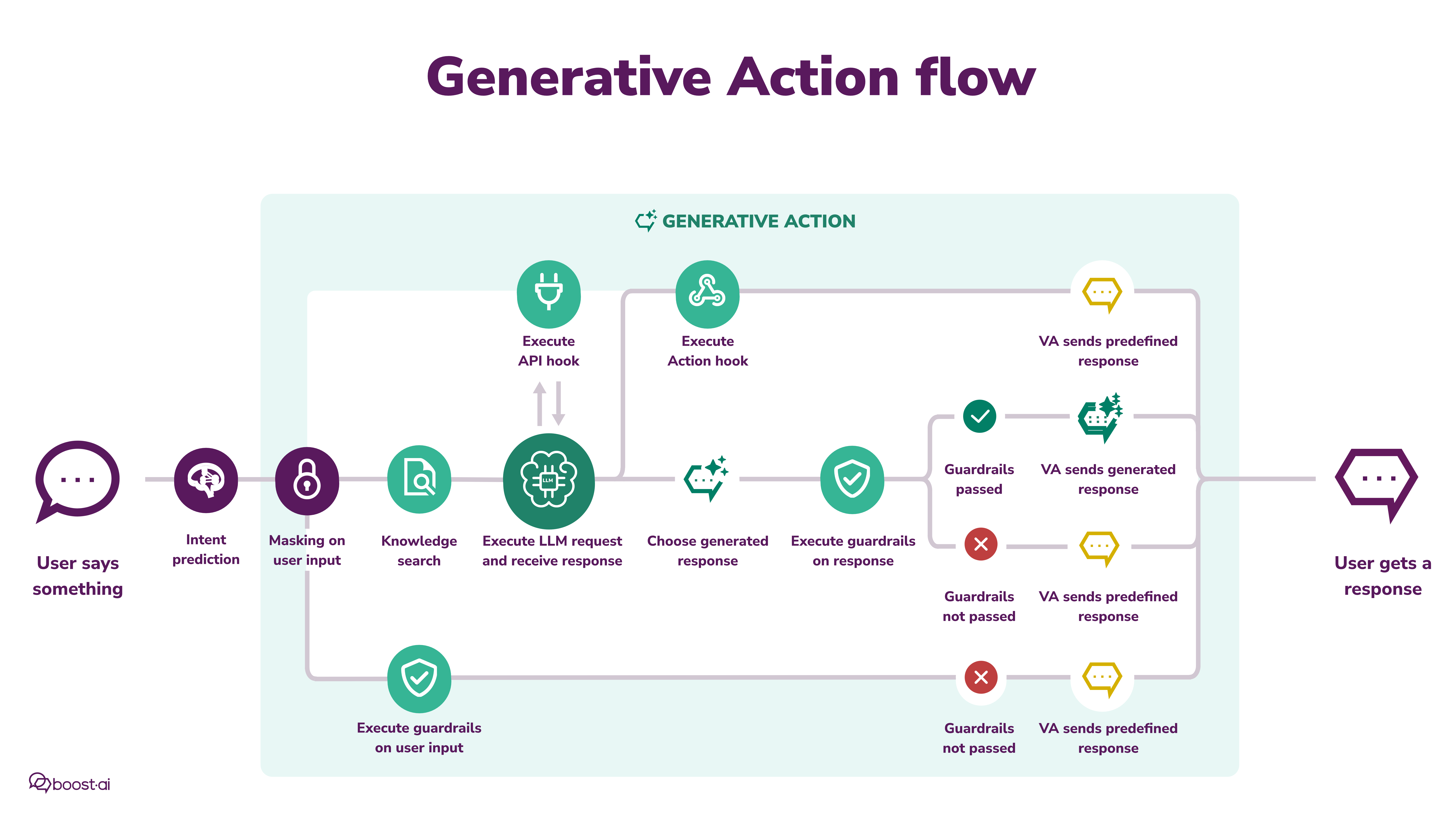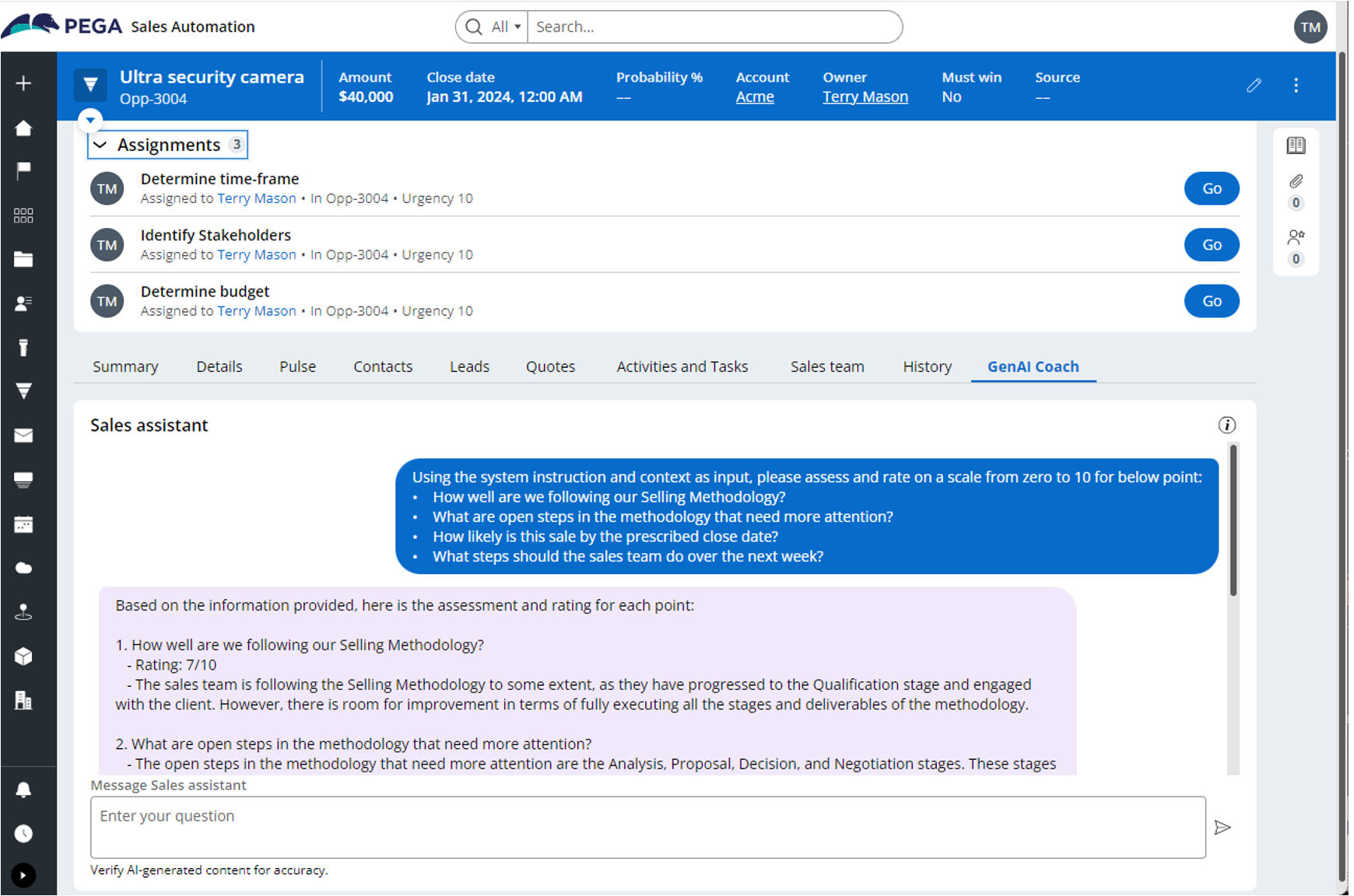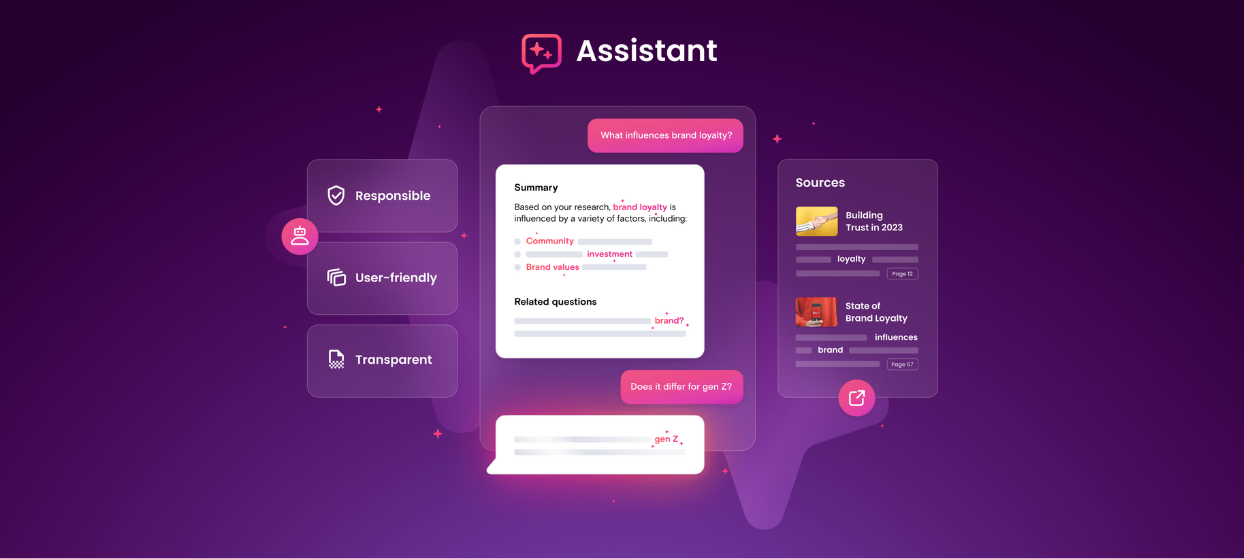Welcome to this week’s No Jitter Roll, our regular roundup of product news in the communication and collaboration spaces. Leading off this week, we highlight: ASAPP’s new GenerativeAgent, Zendesk's new AI-based customer service features; Kore.ai's updated platform; boost.ai's Gen AI-powered virtual agents; Pega's GenAI Coach; Stravito's assistant; and the general availability of Zoom Workplace.
Additionally, 8x8 launched Operator Connect for Microsoft Teams and WorkForce Software released an extension for SAP.
ASAPP Unveils GenerativeAgent to Fully Automate Contact Center Interactions
The generative AI company for contact centers launched GenerativeAgent, a system to fully automate customer interactions as well as escalating and assigning certain interactions to human agents. GenerativeAgent is fully generative and grounded on the content of an enterprise’s APIs and knowledge systems.
“This product is completely generative,” said Ted Burke, head of product with ASAPP. “Most solutions today are rules based or deterministic systems. Companies basically spend hours of effort just writing all of these permutations of every single response that will get sent to the customer. If you've ever interacted with these bots, most of the time they fall on their face anytime you ask anything remotely nuanced.”
ASAPP said it primarily uses large language models (LLMs) that it has built itself, but also uses some publicly available models.
The following screenshot shows the GenerativeAgent interacting with customers on its own without those pre-written dialog flows and responses. Importantly, it is grounded in a company’s policies, procedures, and desired controls, to create ‘guardrails’ to satisfy security, compliance and overall business process requirements. As an example, a company can prevent GenerativeAgent from answering questions outside a specific scope. So, ‘what’s my balance?’ would be okay, but ‘which team will win this weekend?’ would get an ‘I can’t answer that’ type of response. The screenshot below shows GenerativeAgent escalating to a human agent when, according to those guardrails, the situation warrants. (The leftmost panel shows GenerativeAgent handling the interaction by itself.)
Burke referred to these escalations as the GenerativeAgent getting 'blocked.' “Humans still play an important role and there are different categories of places where that can happen. Maybe there’s a lack of integration for the GenerativeAgent – the API isn’t built or isn’t ready to be exposed,” Burke said. “Or maybe there’s a business reason that a company doesn't want a particular scenario to be fully automated all the time.”
The following screenshot shows how the GenerativeAgent escalates to a human agent. On the left, GenerativeAgent presents the human with a choice and, in this case, also recommends an action based on its knowledge of the interaction and company rules. The middle panel provides the transcript of what the GenerativeAgent did, and the righthand panel provides context. The human then finalizes the interaction, and the GenerativeAgent presents that to the customer. The human agent is never in direct contact with the customer. This is analogous to human agents going to their supervisor for a decision on a case.
Just as the human supervisor supports multiple agents, the human agent can now support multiple GenerativeAgents – ASAPP’s term for this is ‘inversion of control.’
“Some of our large enterprise customers have over 50,000 call center agents – it’s like a small city of people, supporting their customers,” said Michael Lawder, Chief Experience Officer (CXO) with ASAPP. “In that inversion of control model where a single agent can support three, four or five, or however many customers concurrently for those tasks that are routed to them, you're talking about a pretty dramatic change in cost structure from what some of these companies are spending, which is two, three, four billion dollars a year on support, to spending a very small fraction of that moving forward. So from a cost standpoint, this is just a transformational opportunity to really change how you support customers.”
GenerativeAgent works for both voice and chat channels. Note that in the voice use case, GenerativeAgent is using speech-to-text and text-to-speech to directly converse with customers. The system is built on AWS. Ernst & Young, PTP, and Infosys are strategic integration partners while their CCaaS partners are Genesys, AWS, Avaya, and Cisco.
Zendesk Launches AI-Powered Service Solutions
The CX solution provider is launching autonomous AI agents, workflow automation, agent copilot, Workforce Management (WFM) and Quality Assurance (QA) capabilities – all powered by Zendesk AI.
The autonomous AI agents will directly interact with customers and provide resolutions for inquiries. It does this via integrate with a company’s knowledge base and offers full customization options so the enterprise can tailor the types of inquiries the agent can handle. The Agent copilot is geared toward human agents and offers them generative AI-powered guidance. It also includes gen AI-based tools to create knowledge bases and conversational search.
Zendesk also launched Workforce Engagement Management (WEM) and is adding in the WFM and QA capabilities cited above to that product. Overall, Zendesk’s new predictive workforce tools provide supervisors with real-time visibility into schedule changes so that they can adapt agent scheduling to compensate. Zendesk Voice QA WFM and Zendesk QA evaluate call transcripts, score calls, and identify outliers for coaching and review. QA for AI Agents evaluates 100 percent of AI Agent interactions and uses AI to spot interactions that require human intervention, including churn risks, incorrect workflows, and knowledge center updates.
- Zendesk also announced it will use Amazon Bedrock and Anthropic’s Claude 3 model family, thus providing Zendesk customers with flexibility in deploying large language models (LLMs) for customer interactions.
Kore.ai Unveils New XO Platform V11.0
The enterprise conversational and generative AI platform provider released the Kore.ai Experience Optimization (XO) Platform Version 11.0. This release provides a single interface across Kore.ai’s products (for automation, contact center, search, and agent). It also enables the use of multiple LLMs, including Kore’s own XO GPT models. Further, the platform implements retrieval augmented generation (RAG) to help companies ground the models on their own data. Additional new capabilities include agent assistance and support for automated outbound campaigns using an agentless dialer.
boost.ai Introduces Generative Action for Customer Service
The conversational AI solution provider launched Generative Action which enables the use of Gen AI-enabled virtual agents (VAs) to automate customer interactions. Generative Action implements various approaches to safeguard how the VAs interact with customers:
- Custom or pre-built guardrails, the capability to re-use them globally within the platform, and topic-level control of any acceptable level of risk.
- Centralized knowledge to ensure the VAs only use approved sources.
- Oversight of knowledge management to minimize risk of hallucination.
- API hooks to deliver so the VAs can provide complementary data/info within the customer interaction.
- Action Hooks to trigger predefined flows around customer-defined sensitive actions or “high-stakes” interactions.
Generative Action will be widely available April 30.
Pega Introduces Pega GenAI Coach
The enterprise AI decisioning and workflow automation platform provider announced Pega GenAI Coach which analyzes a user’s work and relevant data in context and then provides proactive advice on how to optimize their workflows. The generative AI-powered Coaches can be tailored to an organization’s objectives and their employees’ specific needs. For example, the manager of a sales team could input industry knowledge and their company’s best practices directly into the Coach so the sales reps could receive specific advice and suggestions in how move deals forward or provide a better sales experience.
The Pega GenAI Coach, built on the Pega GenAI architecture, can handles complex workflows with auditability, security, and guardrails appropriate for the enterprise. Coach will also access information synthesized by Pega GenAI Knowledge Buddy to bring relevant enterprise knowledge directly to users as they work on cases.
Stravito Debuts Generative AI-powered Assistant
The knowledge management solution provider unveiled Stravito Assistant, a Gen AI-powered assistant that provides a conversational interface for users. Building on its initial Gen AI tool, users can now have a full conversation with Stravito Assistant. The system will prompt users to ask follow-up and clarifying questions, thus drilling deeper into their research. Each response is footnoted and users can click through to the source material for more details. Responses can also be drilled down by time and location to reflect the dynamic nature of insights and how they can vary by region.
Zoom Workplace Now Generally Available
Zoom unveiled Zoom Workplace on March 25, which was covered by regular NJ contributor Zeus Kerravala here. On April 15, Zoom announced that Zoom Workplace is now generally available. As Kerravala wrote, Workplace provides “customers with various integration options through APIs, SDKs, and the more than 2,500 integrations available in the Zoom App Marketplace.”
With Workplace, Zoom AI Companion now includes a way to access the digital assistant’s functions, Ask AI Companion.
As Kerravala wrote, “Ask AI Companion works across the Zoom platform, offering a tool that brings together information from Zoom Meetings, Mail, Team Chat, Notes, and Docs to help users prepare for their workdays. Additionally, Ask AI Companion assists users in prepping for and summarizing meetings, identifying actionable items, drafting agendas, and condensing chat, email, and document threads.”
8x8 Launches Operator Connect for Microsoft Teams
The integrated cloud contact center and unified communications platform provider, announced 8x8 Operator Connect for Microsoft Teams, which offers native Public Switched Telephone Network (PSTN) calling in Microsoft Teams through the Operator Connect program. That Operator Connect option is powered by 8x8’s Global Reach network. 8x8 Operator Connect for Microsoft Teams will launch with flexible calling plans, and will support local presence in 20 countries, including the United States, United Kingdom, Canada, and Australia.
WorkForce Software’s SAP Deskless Worker Experience Add-on Now Available
The workforce management solution provider for large employers launched its new SAP solution extension, the SAP Deskless Worker Experience add-on by WorkForce Software. The extension integrates with SAP SuccessFactors HCM to provide employee communications capabilities, as well as forecasting and scheduling, time and attendance management, absence and leave management. As the name implies, the product is targeted at remote, shift-based deskless, and frontline workers. Some of the communications capabilities include broadcast, chat, and direct communications capabilities leveraging real-time data and integrated into the flow of work. These capabilities are consumer-grade, secure, and accessible via the employees’ own mobile devices.
This Week on No Jitter
In case you missed them, here are some of our top stories:
- Google Vids and More: Unpacking Google Workspace's latest AI and security updates from Google Cloud Next '24
- AI will live up to its hype: Tom Brannen provides his thoughts on why AI will live up to its hype and may very well avoid the “Trough of Disillusionment” thanks to its ability to improve itself.
Reserve Your Spot: Enterprise Connect AI 2024
Check out the new Enterprise Connect AI 2-day summit which offers a unique opportunity to reach technology decision makers actively seeking insights to help lead their enterprise’s implementation of AI for communications/CX tech and business productivity. EC AI 2024 will be held October 1-2, 2024 at the Santa Clara Convention Center, CA.






